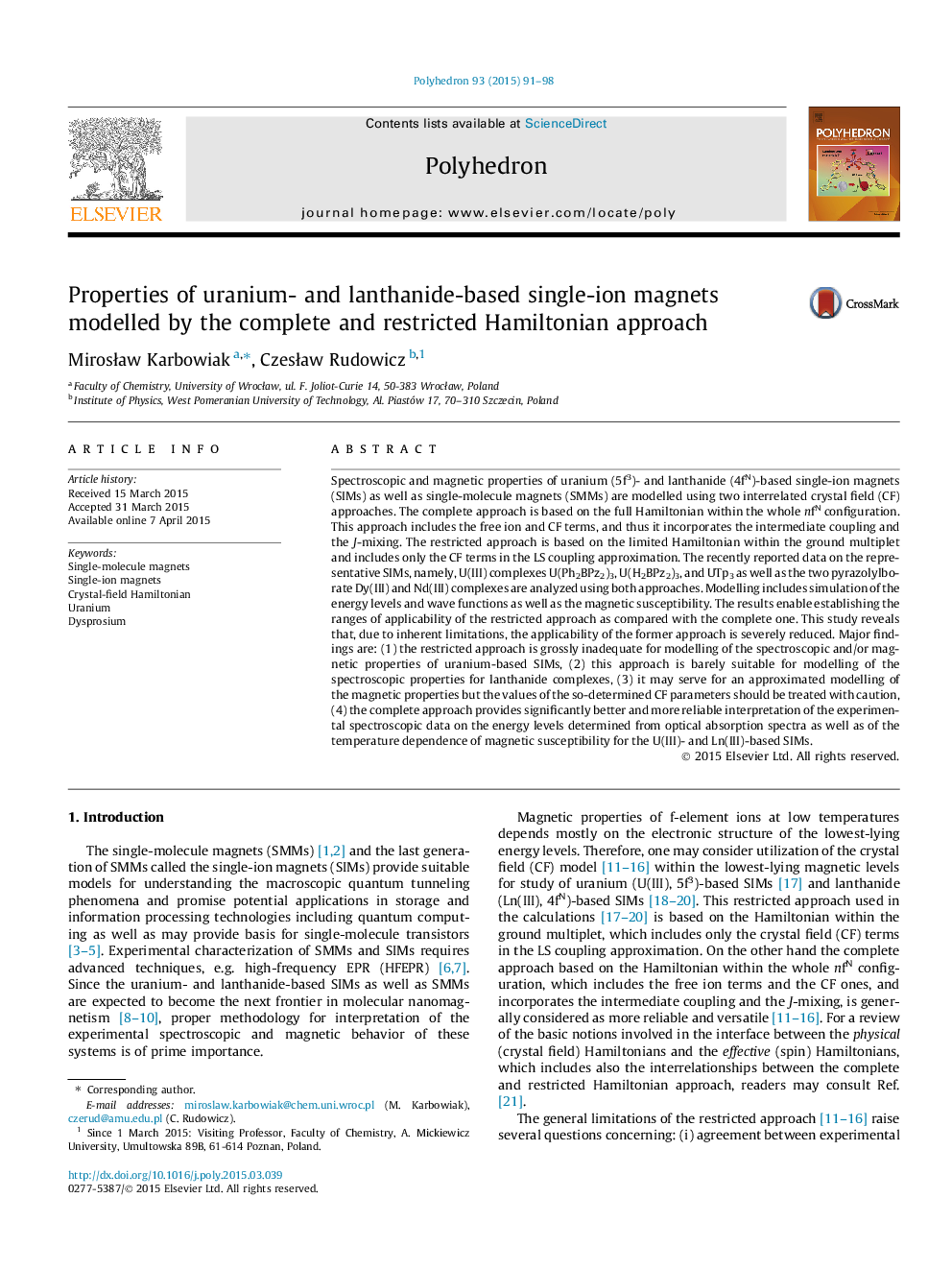| Article ID | Journal | Published Year | Pages | File Type |
|---|---|---|---|---|
| 1337233 | Polyhedron | 2015 | 8 Pages |
Spectroscopic and magnetic properties of uranium (5f3)- and lanthanide (4fN)-based single-ion magnets (SIMs) as well as single-molecule magnets (SMMs) are modelled using two interrelated crystal field (CF) approaches. The complete approach is based on the full Hamiltonian within the whole nfN configuration. This approach includes the free ion and CF terms, and thus it incorporates the intermediate coupling and the J-mixing. The restricted approach is based on the limited Hamiltonian within the ground multiplet and includes only the CF terms in the LS coupling approximation. The recently reported data on the representative SIMs, namely, U(III) complexes U(Ph2BPz2)3, U(H2BPz2)3, and UTp3 as well as the two pyrazolylborate Dy(III) and Nd(III) complexes are analyzed using both approaches. Modelling includes simulation of the energy levels and wave functions as well as the magnetic susceptibility. The results enable establishing the ranges of applicability of the restricted approach as compared with the complete one. This study reveals that, due to inherent limitations, the applicability of the former approach is severely reduced. Major findings are: (1) the restricted approach is grossly inadequate for modelling of the spectroscopic and/or magnetic properties of uranium-based SIMs, (2) this approach is barely suitable for modelling of the spectroscopic properties for lanthanide complexes, (3) it may serve for an approximated modelling of the magnetic properties but the values of the so-determined CF parameters should be treated with caution, (4) the complete approach provides significantly better and more reliable interpretation of the experimental spectroscopic data on the energy levels determined from optical absorption spectra as well as of the temperature dependence of magnetic susceptibility for the U(III)- and Ln(III)-based SIMs.
Graphical abstractThe complete Hamiltonian approach and the restricted one used for modelling of properties of uranium- and lanthanide-based single-ion magnets are compared.Figure optionsDownload full-size imageDownload as PowerPoint slide
